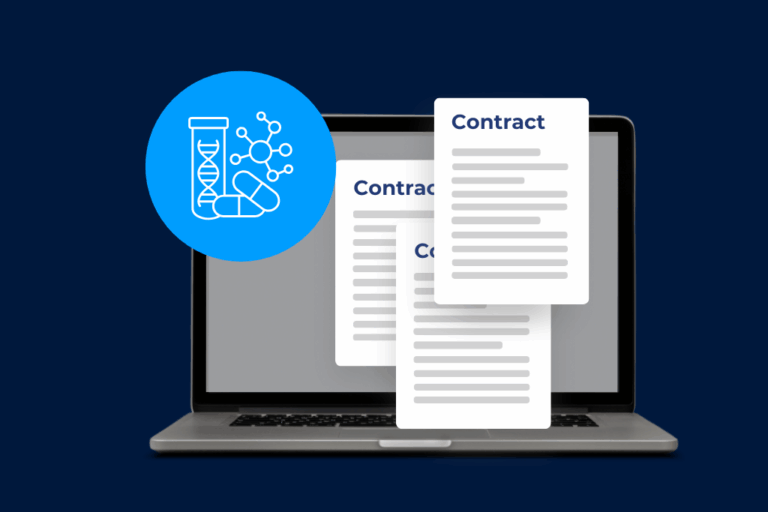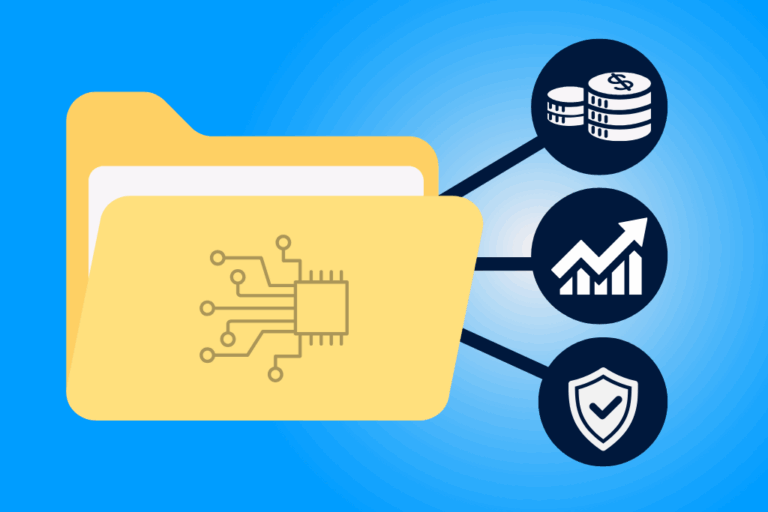The Chief Data Officer is now indispensable in the C-suite. Tasked with leading the data-driven transformation of their organisations, they are increasingly facing a wider scope of executive responsibilities. But with challenge comes opportunity. In recent years, the role of the Chief Data Officer (CDO) has seen a remarkable surge.

What is a chief data officer (CDO)
A Chief Data Officer (CDO) is an executive who is responsible for maximizing the business value of existing company data. They usually develop a company’s data strategy and lead key data management tasks such as data governance, data quality, data analytics and data security.
When the position of CDO was first established, the focus was primarily on regulatory compliance and governance issues. Today, the role is much more strategic. The CDO is expected to use data-driven insights to deliver tangible business results and drive innovation.
CDOs work closely with other top-level executives to implement digital transformation and launch data-driven initiatives that increase profitability. Most successful CDOs report directly to the CEO. However, in some companies, the CDO also reports to the COO, CFO, CIO or another senior executive.
The evolving role of the CDO
Back in 2010, research firm Gartner recorded only 15 CDOs worldwide. By their 2018 survey, that number had already grown to over 4,000 CDOs. Even more striking: by the end of 2019, it was forecast that 90% of global organizations would have a CDO in place.
Looking at this trend from today’s perspective in 2025, it’s clear that the CDO position has become a core element of modern corporate structures. What started as a niche function has evolved into a strategic leadership role that is now firmly established and continues to gain influence across industries.
What do you need to know about the CDO?
The importance of leveraging data for organisations is indisputable. For scale, the world produces 2.5 quintillion bytes of data a day, while 90% of data in the world today was created in the last two years. Worldwide, every minute of the day 103,447,520 spam emails are created. Previously the mandate of the CDO was to take charge of how their company utilises this information, for example, data processing and data mining while remaining responsible for enterprise wide governance. Yet this role is changing. Industry experts are in agreement that the role is growing in scope owing to the significance of data for making informed business decisions at every level.
CMO of MicroStrategy, Mark Gambil, in conversation with Forbes magazine outlined the increasing value of the position compared to other executives in the C-suite, “The CDO is charged with providing decision-ready data to other executives to improve cycle times and cost on project considerations”. “This knowledge, he says, “should influence decision-making”. From this role, other executives can benefit hugely from tangible business value that comes with this knowledge. The data leveraged and carefully considered by the CDO can enhance, streamline and better define everyday decisions for the entire organisation, fluidly.
It is also clear that the function of the CDO will become increasingly key for organisations unable to analyse their data strategically in a data centric world. According to the Harvard Business Review, ‘less than 1% of unstructured data is analysed or used at all’. For global organisations this is a huge disadvantage. What is more, the same research noted that 70% of employees have access to data they should not have. CDO’s add intrinsic value to companies by unknotting these kinks.
Hybrid CDO role
The Chief Data Officer will continue to define and exercise the organisational benefits of their hybrid-role. Research affirms this. 86% of CDO’s in a past survey cited “defining data and analytics strategy for the organization” as their number one priority, with 71% of respondents are consulted as thought leaders on emerging digital models. In the hurtling pace of digitalisation, this knowledge will be key. According to New Partners, 34% of CDO’s cite their professional background experience as ‘external change agents’.
In recent years, CDOs have taken on increasing responsibility, including driving revenue growth, with 36% reporting responsibility for profit and loss ownership. According to Forrester, even a 10% increase in data accessibility can generate over $65 million in additional net income for a typical Fortune 1000 company. To meet these growing responsibilities, CDOs must work closely with operational units and IT departments. The Harvard Business Review highlights that stronger collaboration helps obtain clean data, which maximizes results and reduces operational costs. Clean, high‑quality data enables better, faster analytics, while poor data quality can create waste and increase risks in IT projects. As data and analytics become more critical, organizations that support and empower their CDOs are positioned to thrive.
What does a CDO do?
Essentially, the tasks of Chief Data Officers are wide-ranging and combine the areas of data management and business development. Their core responsibilities include topics such as data governance, data security, data lifecycle management, data analysis and the development of an overarching data strategy. Therefore, CDOs are responsible for:
- Data governance: Ensuring that company data is of high quality, secure and easily accessible. Develop and monitor policies, reduce data silos and work closely with IT and legal to ensure compliance.
- Data analysis: Supporting data scientists in gaining valuable insights from data. Providing tools and processes to incorporate analytics into business decisions, planning and workflows.
- Data strategy: Developing a company-wide roadmap on how to use data as a strategic asset. Promote data literacy across all teams and use KPIs such as sales growth, customer retention or conversion rates to monitor success.
- Data security: Protecting all data from unauthorized access, manipulation or theft. Use of measures such as encryption, backups, firewalls, identity and access management and collaboration with CISOs to ensure compliance with security standards.
- Data lifecycle management: Controlling and managing data across all phases, from collection and processing to archiving and deletion. Ensuring data quality before use, optimizing storage processes and controlling costs. Consequently, CDOs are creating targeted policies designed to enhance the value and effective use of data throughout every stage of its lifecycle.
In summary, all of these tasks help a CDO use data as a valuable resource while minimizing risks. In doing so, they make a significant contribution to the company’s sustainable success and competitiveness.
Challenges for Chief Data Officers (CDOs)
As the role of a CDO is demanding and still evolving, several key challenges commonly arise:
-
Ensuring data privacy and security: CDOs must make sure sensitive customer and business information is stored securely, managed responsibly, and handled in compliance with all applicable regulations.
-
Securing budget: It can be difficult to obtain sufficient funding for data initiatives, especially in times of financial pressure, even though data is becoming a key driver of business value.
- Balancing governance and innovation: They must enforce strict data governance while still enabling innovation and operational flexibility.
-
Keeping pace with rapidly evolving technology: With new tools, platforms, and methods emerging constantly, CDOs need to continuously adapt strategies and stay ahead to keep their organization competitive.
Opportunities for CDOs
Despite these challenges, the position of CDO offers significant opportunities to influence and shape the future of a business:
-
Driving digital transformation: CDOs play a central role in moving organizations toward a more digital, data‑driven operating model.
-
Fostering a data‑driven culture: By promoting data literacy and accessibility, they help all teams use data effectively in daily decisions.
-
Leveraging data expertise: Their knowledge enables organizations to tap into the growing value of data in the digital economy.
-
Driving innovation and growth: When done well, their initiatives lead to improved efficiency, new business opportunities, and a stronger competitive position.
Skills and Qualifications of a CDO
To handle these challenges and make the most of these opportunities, CDOs need a broad and deep skill set:
-
Comprehensive expertise in data management and analytics
-
Leadership and team management
-
Strong communication abilities
-
Analytical and problem‑solving skills
-
Expertise in data governance
Altogether, these skills and qualifications enable a CDO to bridge the gap between technology and business strategy. This ensures that data truly becomes a driver of organizational success.
What is the difference between a CDO, CAO and a CIO?
You may have already wondered what the difference is between a Chief Information Officer (CIO), a Chief Data Officer (CDO), and a Chief Analytics Officer (CAO). The distinction lies in their respective areas of responsibility.
A CIO is primarily responsible for the technological infrastructure of an organization – the systems, networks, hardware, and software that process, store, and make data available. The CIO ensures that this technical foundation is stable, secure, and efficient so that all applications and processes run smoothly. Therefore, this role requires strong technical and leadership skills to manage complex IT environments.
A CDO, on the other hand, focuses on how data can be used to create tangible business value. The CDO develops data strategies, sets policies for governance, quality, and security, and works to ensure that data becomes a strategic asset. By doing so, they enable better decision-making, drive innovation, and strengthen the company’s competitiveness in the long term.
Lastly, a CAO (Chief Analytics Officer) or sometimes CDAO (Chief Data and Analytics Officer) is responsible for turning data into actionable insights. This role focuses on advanced analytics, data science, and modeling. The CAO leads teams that develop algorithms and interpret complex datasets. These teams deliver insights that support strategic and operational decisions across the organization.
All three roles are closely interconnected. CIOs, CDOs, and CAOs work hand in hand to ensure that the technical infrastructure, data management, and analytics capabilities align with business objectives. It is precisely through this collaboration that organizations can successfully implement modern, data‑driven business models and achieve sustainable growth.
CDOs and Technology
CDOs are increasingly relying on advanced technologies to drive data-driven transformation in their businesses. Modern tools such as data governance platforms, cloud‑based data warehouses, and AI‑powered analytics engines enable them to manage large data ecosystems. These tools allow them to do so with greater precision and speed.
With the advent of technologies such as generative AI and machine learning, CDOs are also taking on new strategic roles. They must not only generate actionable insights and optimize decision-making processes, but also establish a sustainable data culture that promotes innovation and competitive advantage.
At the same time, the constantly growing AI-related data requirements must be reconciled with established priorities such as data protection, data security, and regulatory compliance. This is a key task for the future of successful, data‑driven companies.
DiliTrust Governance is a collaborative legal platform to streamline, centralise and organise all legal activities in your Legal Department. DiliTrust Governance allows users to get strategic about data management and data security. To find out more about how our solution can seamlessly support your Legal Department book a free demo here today.


